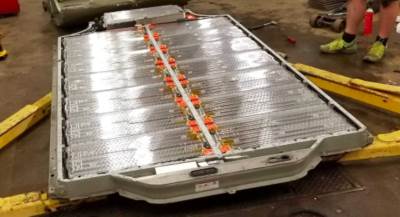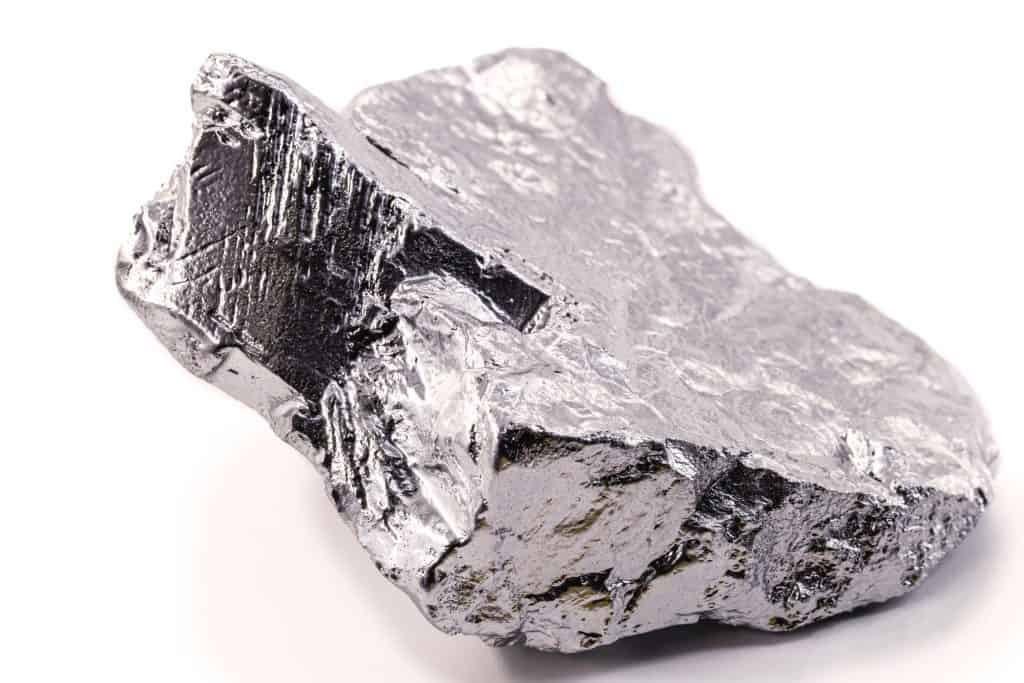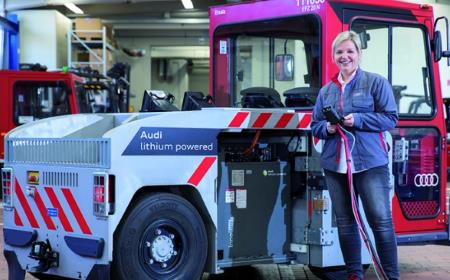Electric car batteries can last for a decade or more before their efficiency starts to falter, but EV adoption has only really ramped up in the past 5+ years. So this poses the question of what will happen to the potential flood of unwanted, half-tonne battery packs in old electric cars.
The Problem
The battery pack within electric cars are very heavy: they weigh anything from 293 kg (in the Nissan Leaf) to 540 kg (in the Tesla Model S 2015 version). So it’s not as easy as taking your old phone battery down to the nearest recycling point!
And data from Bloomberg predicts that there’ll be 3,400,000 (3.4 million) electric car battery packs in circulation by 2025, whereas Ajay Kochhar (CEO of Lithium-ion battery recycling company Li-Cycle) predicts that there’ll be up to 11 million tonnes of disused lithium-ion batteries to do something with by 2030.
Finally, only 5% of lithium-ion batteries are currently recycled across Europe. So there’s very heavy (hence hard to transport en masse) car batteries which will need to be recycled in very large quantities throughout 2020-2030… but currently the recycling infrastructure isn’t setup to handle this.
Uh oh! It sounds bad when we put it like that! But on the flip side, there hasn’t been a massive need to recycle electric car batteries thus far either – for the very fact that (as already mentioned) the current ramp up in EV sales has mainly been in the past 5 years or so. Plus there are increasing initiatives to recycle EV batteries: after all, when there’s demand for something, supply often catches up!
Lithium-ion car battery recycling options
Whilst EV batteries could just be paired back to their raw, individual components and reused or resold as needed (as seen in the section below), the fact that car batteries are fairly high capacity (most are 30+ kWh currently) is beneficial because even if they’re 30-50% degraded, that still gives a big power brick which can hold 15+ kWh of electrical power. That gives a few options for their reuse.
Recycling the raw components

The main materials inside a battery pack (the ‘container’ of all the individual battery cells) are:
- Steel (recyclable)
- Copper (recyclable)
- Aluminum (recyclable)
- Plastic (some recyclable, some not)
So most of this is recyclable. In terms of each individual battery cell (where the chemical reaction happens to ‘give’ power as needed), they can be paired back to their individual metals too:
- Cobalt
- Lithium
- Nickel
- Manganese

These can also naturally be re-used as needed, both in general industry re-use and also potentially for newly produced battery cells too.
The key caveat here, though, is that according to Francisco Carranza (MD of energy within Nissan) whilst new battery costs are dropping to €1/kilo, the total value of the reclaimed raw materials is closer to €0.33/kilo.
Having said that, Tesla seem to dispute this idea, and their 2019 Environmental Impact Report mentions that they are adapting their Nevada-based Gigafactory to “closed-loop battery recycling process” which can be re-used “over and over again”. The hope is that this will lead to “significant savings over the long term”. For the full quote (from page 26):
At Gigafactory 1, Tesla is developing a unique battery recycling system that will process both battery manufacturing scrap and end-of-life batteries. Through this system, the recovery of critical minerals such as lithium and cobalt will be maximized along with the recovery of all metals used in the battery cell, such as copper, aluminum and steel. All of these materials will be recovered in forms optimized for new battery material production.
The closed-loop battery recycling process at Gigafactory 1 presents a compelling solution to move energy supply away from the fossil-fuel based practice of take, make and burn, to a more circular model of recycling end-of-life batteries for reuse over and over again. From an economic perspective, we expect to recognize significant savings over the long term, as the costs associated with large-scale battery material recovery and recycling will be far lower than purchasing and transporting new materials.
Equally, VW have said they plan on doing similar: but only for batteries which are “damaged” or have a too-low capacity (possibly after being re-used as outlined later in this article): they will be ground-up in their Salzgitter, Germany facility and refined back into the raw cobalt, lithium, manganese and nickel metals.
Despite Tesla being optimistic about their battery stripping-and-reusing plan (and we wish them well), other auto makers have started to explore other uses for end-of-life EV batteries, including some really interesting ideas – as we explore below.
Powering Factory Tugs And Fork Lifts

In March 2019, Audi announced a plan to take old Audi e-tron batteries and use them to power factory equipment such as tugs and fork lifts. Tugs are used to move around small equipment, similar to baggage buggies at an airport. Previously both tugs and fork lifts were powered by lead-acid batteries, so a move to lithium-ion batteries will allow Audi to charge them up in a more renewable and sustainable way, along with saving them “millions of dollars” each year.
Audi will look to take 24 of the 36 battery modules from an e-tron (possibly the 24 with the highest capacity) and use these to make a smaller battery pack which will power the tugs and fork lifts with around 40 kWh of capacity (although depending on how depleted the individual cells are, the capacity might be as low as 30 kWh or as high as 50 kWh).
Energy storage farms
One of the common problems with generating electricity is that it can’t be easily stored, so electric producers work hard to manage the electrical output based on predicated demand at that time. For example, a power plant might produce more electric during a massive sporting event – knowing that lots of people will be watching it on TV (and also making drinks via their kettle or coffee machines). Equally less electric is produced in the middle of the night.
This balancing act is especially true for less predictable ways of generating electric, like wind and solar. A surge in electric demand can’t be guaranteed to be met if it’s a cloudy, still day! So old car batteries could be used as ‘power bricks’, which can store up generated wind or solar power (whenever it’s generated) – to be output back into the energy grid at peak times. This helps to level out demand and supply of electric, especially for more renewable electrical sources.
VW are looking to do similar, and will turn old VW EV batteries into portable car charging stations and equipment. This could be useful for temporary parking (such as in festivals and events), whereby portable car chargers could be pre-charged in a factory and then transported to these temporary car parks to help charge electric cars.
Street lighting
The Japanese town of Namie was hit by a magnitude-9 earthquake (then tsunami) on March 11th 2011. This crippled its lighting infrastructure (amongst other buildings and infrastructure), a position they haven’t fully recovered from.
So an innovative project by Nissan (and their partner 4R Energy Corporation) have designed street lights which have battery modules from old Nissan Leaf vehicles in the bottom, and solar panels on their top. The batteries get charged throughout the day, then this is stored in the old EV batteries. At night, the street light comes on:
(the video has English subtitles)
This idea is definitely an interesting one. Each street light becomes self contained and doesn’t need to be hooked up to a more centralised power grid. This reduces complexity of street light installations, and potentially their overall costs. Definitely an interesting idea!
Powering office/apartment blocks, and houses
The average home (flat or house) uses 6-12 kWh of electricity each day. An office might use 10-60 kWh of electricity per day depending on its size.
Hence retired EV batteries are ideal for use in homes and office blocks, be it powering shared office/flat block features (like communal lighting) or more day-to-day equipment within homes/offices (such as computers or heating systems).
Even a 40% degraded smaller 24 kWh car battery would yield over 14 kWh of electric storage: enough for the vast majority of homes and small offices. Some current uses of this idea are:
- An apartment complex in Sweden has seen multiple silver cabinets installed by a compann called Box of Energy. These use 20 battery modules each from an old Volvo hybrid, and solar energy from the roof is stored in these batteries and used to power common lighting and the elevators.
- England has seen old Renault Zoe batteries be broken up and supplied in dishwasher-size units by company Powervault. They will also be charged by solar power, and determine when it’s best to use electricity from the grid, or when it’s best to use this stored-up green power.
7-Eleven convenience stores
7-Eleven – the convenience stores in America and now Japan – will be supplied with Lithium-ion battery modules from old Prius hybrids. These will gather power from solar panels, and this can then power electronic equipment in-store such as the drink coolers and grill machines.
Build a ‘smart island’

When thinking about recycling batteries, we all think of building a brand new ‘smart island’… right?
Okay, us neither. But that’s what Renault have done in Portugal: they are turning the fairly unpopulated island of Porto Santo, Madeira into a ‘smart island’ using as much renewal power (solar/wind) and electric batteries (for power storage) as possible. The smart island project will have three phrases:
- 20 volunteers on Porto Santo will receive a mix of Renault Zoe and Kango ZE Utility Van vehicles for every day use, with various public and private charging points being provided. The at-home chargers will be smart chargers that can stop and start the charging depending on the car’s battery levels and the current demand for electric on the island.
- The second phase will extend the smart charger idea, allowing plugged-in EVs to give energy back to the grid! Therefore allowing the EV battery packs to function as mobile power storage units. Eric Feunteun (Director of electric vehicles at Renault) explains this saying “Electric vehicles have moved from being a constraint… to an opportunity in the last few months and years… they provide a way to store electricity, which is one of the key problems on their table with renewable energy.”.
- The third phase is more like the traditional re-use methods seem in other sections: allowing your spent EV battery to be repurposed as a separate, standalone power brick within an energy farm or office/apartment blocks.
This is just a trial in a fairly remote island, but the implications are quite widespread. There’s no reason why your plugged-in EV at home couldn’t return energy to the grid at peak times (assuming you agree, and aren’t planning on using it that night!), only to charge up from the grid later on that night when demand for electric is lower and it’s (for example) much windier. A very interesting prospect!
To conclude
Whilst the electric car sector is still working out the best way of dealing with the upcoming influx of old Li-ion batteries, the idea that they can be re-used in the existing energy sector (i.e. as a power store in their own right, outside of the car chassis) is a good one. As Cecile Sobole (from Renault’s EV division) put it: “The logic behind this is the circular economy… The battery coming from the electric vehicle will become more and more a part of the energy world.”.
1 comment
I do like the idea of a two-way relationship between an EV and charger, allowing the car to supply the home with electricity on demand. I have a 10 year old Zoe with a 22kWh battery which can probably still hold 18kWh and would serve as a very decent UPS or solar storage unit to provide domestic electricity for up to 3 days. However, apart from the Sion, from Sono Motors, I know of no currently available EV which can do this without doing some damage to the car (or house).
Can anyone suggest a solution, or at least elaborate on the subject?